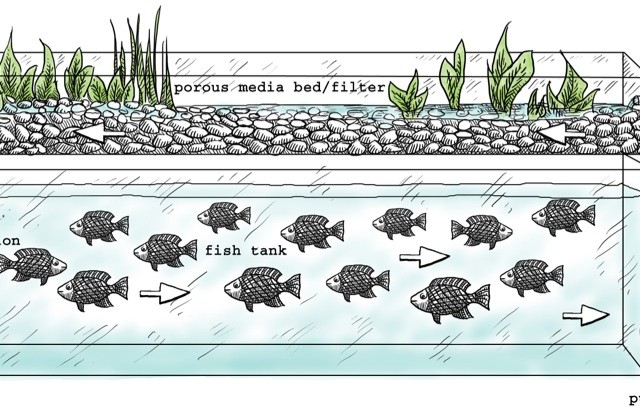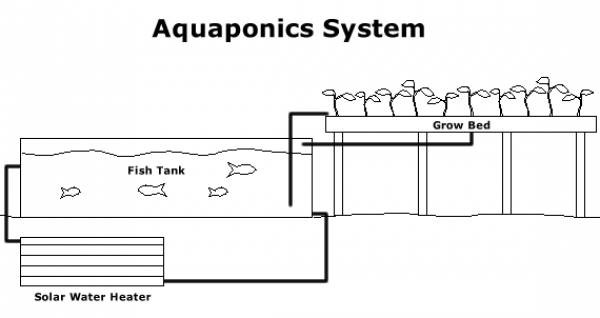
Fish are a great source of nutrition, for humans, animals and plants. You can keep them in ponds or tanks, and so long as they have space, the right temperature, oxygen, and clean water, they will be some of the most efficient meat you can raise.
However, keeping the water clean and aerated takes effort. You must keep the water circulated and have a means to filter out the fish manure. This is where plants come in. There is a lot of nutrition in fish manure, and plants are excellent at filtering, so the two together make a perfect match. You can get a high yield of vegetables from the same resources you need to just grow fish, and that is the principal of aquaponics.
The trick of aquaponics is to get the right balance of water flow, fish stocking rates, and plant stocking rates. To reduce energy use, the total head of the system must be as low as possible. This means putting the biofilter (plants component) at a height barely above the fish tank. It will therefore not take much to pump the dirty water up to the plants, and the clean water can gravity-flow back to the fish tank. This will produce a self-contained system that can grow enough food for a family in an area smaller than a hybrid car!

Fish wastes are excellent organic fertilizers, as they contain many trace elements and are mostly ammonia. The unfortunate fact, however, is that they build up quickly and soon kill the fish that created them (sound familiar?). To avoid a mass kill-off, it is essential to filter the water. One of the simplest and best ways of filtering water is to establish a bio-filter. Bio-filters work by growing friendly bacteria on a substrate, like gravel. The bacteria break down the fish wastes into soluble nutrients that can be available for use by plants and aquatic life systems. By running the water through plants as well, these nutrients get taken up by the plants and the water is returned to the fish very clean and fresh and oxygenated.
By establishing a good bio-filter you can increase the stocking rating of the fish, thus increasing production. On average, you can grow 7 tons of food to one ton of fish waste. For most systems, aim for a 2 to 1 ratio of bio-filter volume to fish tank volume.